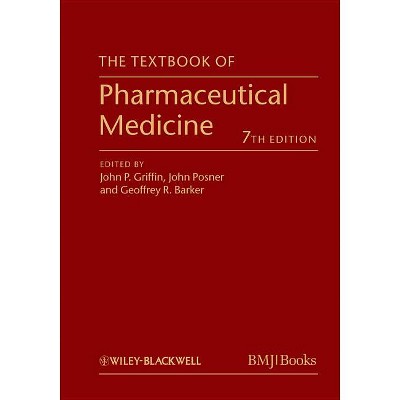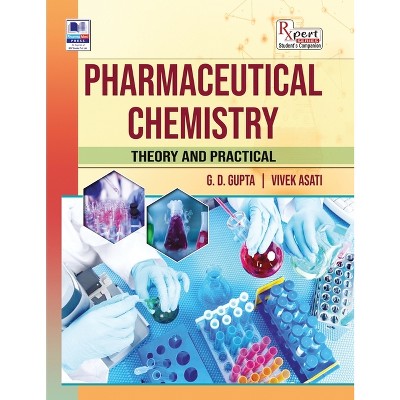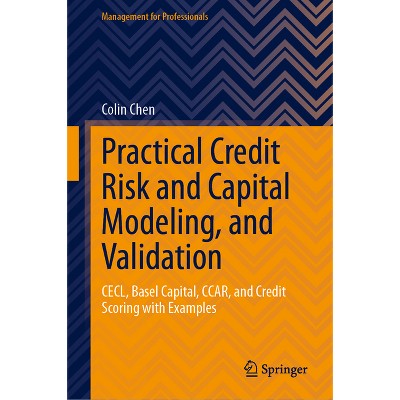Solid-State Properties of Pharmaceutical Materials - by Stephen R Byrn & George Zografi & Chen (Hardcover)

About this item
Highlights
- Presents a detailed discussion of important solid-state properties, methods, and applications of solid-state analysis Illustrates the various phases or forms that solids can assume and discussesvarious issues related to the relative stability of solid forms and tendencies to undergo transformation Covers key methods of solid state analysis including X-ray powder diffraction, thermal analysis, microscopy, spectroscopy, and solid state NMR Reviews critical physical attributes of pharmaceutical materials, mainly related to drug substances, including particle size/surface area, hygroscopicity, mechanical properties, solubility, and physical and chemical stability Showcases the application of solid state material science in rational selection of drug solid forms, analysis of various solid forms within drug substance and the drug product, and pharmaceutical product development Introduces appropriate manufacturing and control procedures using Quality by Design, and other strategies that lead to safe and effective products with a minimum of resources and time
- About the Author: Stephen R. Byrn, PhD is Charles B. Jordan Professor of Medicinal Chemistry in the School of Pharmacy, Purdue University.
- 432 Pages
- Medical, Pharmacy
Description
Book Synopsis
Presents a detailed discussion of important solid-state properties, methods, and applications of solid-state analysis- Illustrates the various phases or forms that solids can assume and discussesvarious issues related to the relative stability of solid forms and tendencies to undergo transformation
- Covers key methods of solid state analysis including X-ray powder diffraction, thermal analysis, microscopy, spectroscopy, and solid state NMR
- Reviews critical physical attributes of pharmaceutical materials, mainly related to drug substances, including particle size/surface area, hygroscopicity, mechanical properties, solubility, and physical and chemical stability
- Showcases the application of solid state material science in rational selection of drug solid forms, analysis of various solid forms within drug substance and the drug product, and pharmaceutical product development
- Introduces appropriate manufacturing and control procedures using Quality by Design, and other strategies that lead to safe and effective products with a minimum of resources and time
From the Back Cover
Presents a detailed discussion of important solid-state properties, methods, and applications of solid-state analysis
The study on solid-state properties of pharmaceutical materials, including drug substances and excipients, is essential for pharmaceutical research and development involving solid dosage forms. Solid characteristics such as polymorphism, formation of hydrates and solvates, degree of crystallinity, and mechanical properties have profound effects on the quality of drug substances and drug products through their effects on properties such as solubility, dissolution, bioavailability, processability, and stability. A fundamental knowledge of solid-state properties is therefore critical for the design, formulation, and manufacture of numerous drug substances and products.
Solid-State Properties of Pharmaceutical Materials presents a detailed discussion of important solid-state properties, and methods of solid-state analysis. The text is split into four parts which includes physical forms of pharmaceutical solids, methods of analysis, critical properties of pharmaceutical solids, and important applications of physical characterization. The methods covered within these parts will allow the reader to design, formulate, and manufacture desirable solid forms for drugs.
Solid-State Properties of Pharmaceutical Materials features:
- An introduction to solid-state pharmaceuticals such as amorphous form, mesophase, polymorph, hydrate/solvate, salt, co-crystal, nano-particles, and solid dispersion
- Intensive discussions about characterization techniques such X-ray powder diffraction, thermal analysis, microscopy, spectroscopy, and solid-state NMR
- Rigorous reviews of quality attributes of pharmaceutical solids such as particle size/surface area, water sorption, dissolution, solubility, mechanical properties, physical stability, and chemical stability
- A thorough presentation about applications of physical characterization techniques in developing and testing drug substances and drug products such as form selection, mixture analysis, formulation development, and quality by design
Solid-State Properties of Pharmaceutical Materials provides a profound knowledge base to readers to help them understand pharmaceutical solids, and offers analytical tool kits for problem solving related to drug substances and drug products.
About the Author
Stephen R. Byrn, PhD is Charles B. Jordan Professor of Medicinal Chemistry in the School of Pharmacy, Purdue University. Dr. Byrn has founded and directed several programs at Purdue University including CAMP, the Center for AIDS Research, the Molecules to Market program, and Purdue's graduate programs in regulatory and quality compliance. Dr. Byrn has served as chair of the Pharmaceutical Sciences Advisory Committee to the FDA and Chair of the Drug Substances Technical Committee, Product Quality Research Initiative. Dr. Byrn is co-founder of SSCI, Inc. a cGMP research and information Company.
George Zografi, PhD is the Edward Kremers Professor Emeritus of Pharmaceutical Sciences, School of Pharmacy, University of Wisconsin-Madison. He was the recipient of the APhA Ebert Prize in 1984 and 2001, the AAPS Dale E. Wurster Award for Pharmaceutics in 1990 and its Distinguished Scientist Award in 1995, as well as the Volwiler Research Achievement Award of the American Association of Colleges of Pharmacy.
Xiaoming (Sean) Chen, PhD is currently the Director of Formulation Development in Antares Pharma Inc. Prior to that, he held various positions in pharmaceutical product development at Schering-Plough, OSI Pharmaceuticals, Astellas Pharma, and Shionogi Inc. He has published over a dozen of papers in peer-reviewed journals and is a co-inventor of four US patents.











